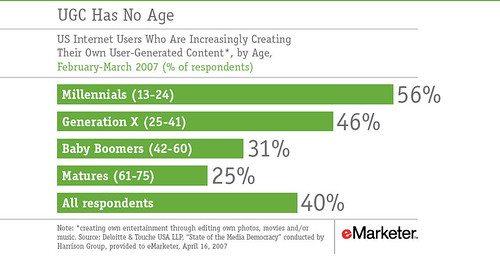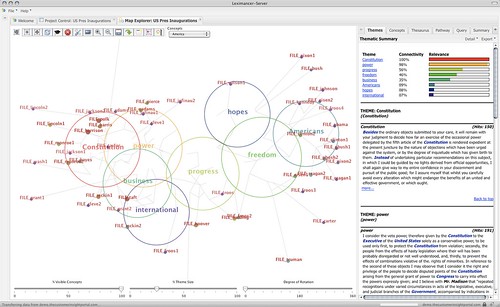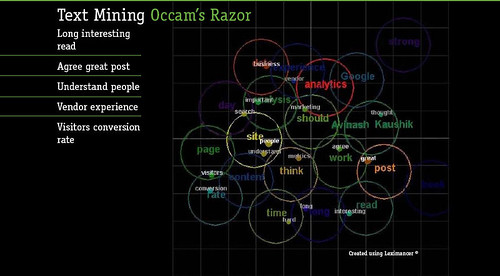Using User Generated Content To Enhance Conversion-Driven SEO
p>Following a series of presentations on eMetrics Summit about ‘Measuring the Voice of the Customer’, I will give some examples on how User Generated Content can be used to both improve the organic results and the conversion rates of a website. The idea behind using UGC in a website is a two-sided effort that can improve both conversions rates and SEO (see other examples in this previous conversion-driven SEO post).
As the web evolves, marketers must find creative solutions to engage customers with their websites and brands. Today, customers are no longer satisfied with consumption; they increasingly expect to be involved in the production of what they buy (or watch), turning them into “prosumers.” As Tapscott and Williams described in their enlightening book, Wikinomics: how mass collaboration changes everything, we have entered the era of prosumption. So how can marketers best take advantage of the voice of the customers, often referred to as user-generated content (UGC)?
UGC is not a passing fad, nor is it only for kids. Take a look at these stats from eMarketer:
What follows are some examples on how UGC can be used to improve both organic search results and conversion rates of a website (see other examples in this previous conversion-driven SEO post).
The benefits of user generated content
UGC can benefit a company in several ways. It enriches websites with precious (and free) content that feeds search crawlers. It is a source of information for newcomers, a place where they can understand products and read about how real people (not marketers!) are taking advantage of them. UGC is a forum for marketers to get feedback and ideas from customers and answer their questions. And finally, UGC is a mechanism that helps create a sense of community, a place where customers feel like stakeholders, a piece of website where they rule.
Amazon pioneered UGC, one of the earliest sites to introduce ratings, reviews, lists, customer images, tags, discussion forums, author blogs, and the list goes on and on. A very interesting UGC effort that Amazon recently launched lately is the Vine program. Since reviewers have been “donating” their time for years (and it looks like it helps selling products), which offers an additional incentive to write reviews for “trusted” users. Vine reviewers receive a monthly newsletter with merchandise to be launched in the next few weeks. Participants can choose a few items and get them for free! The Vine project shows how much Amazon values UGC.
UGC Challenges
Whenever a website launches with UGC areas, it runs the risk of being attacked by competitors or unscrupulous people. It also loses the power to control every single word published on the site. The best approach to handling this challenge is to provide robust usage guidelines to contributors, and to actively moderate UGC. An excellent example of UGC guidelines is offered by the BBC, which provides very comprehensive UGC guidelines for all their web properties.
Measuring the impact of UGC
You can apply similar metrics to UGC that you might use when evaluating your SEO efforts. There are four main areas in which to focus.
- Content quantity. How many pieces of content have users contributed? Are there many people contributing to the website? Or does the UGC area of your site look like an abandoned castle?
- Content linkability. Is UGC helping me to interlink my content? Good examples are tags, which help linking similar content and provide an excellent way for customers and crawlers to navigate the website.
- Content strength. Are visitors using the keywords I am targeting? If so, where? How can I promote these areas?
- Brand awareness or conversation with marketplace. What are visitors saying about your products or site? Are they happy? If not, why? This can become very clear when analyzing product ratings and reviews or website feedback.
You can analyze all the metrics proposed above by using a very interesting and powerful text analysis tool: Leximancer. It also provides some very neat graphs!
Leximancer makes it possible to analyze how often specific keywords are mentioned in any text. In addition, it is possible to find the linkability between keywords used in the text. Using this type of information it is possible to analyze, for example, if specific brands/products are linked to positive or negative terms. It is also possible to analyze the relationship between content and how visitors think.
In the screenshot below (see interactive version here) we can see the interface and the kind of info Leximancer provides. The example analyzes all US presidents’ inauguration speeches into meaningful “themes” (circles), “concepts” (colors) and their associated relationships.
As an example of how Leximancer can provide meaningful metrics on UGC, I analyzed analytics guru Avinash Kaushik’s blog, Occam’s Razor. We looked at all the comments on his blog (without scanning personally identifiable data apart from Avinash’s own posts). The first number I saw was astonishing: Avinash had written 187K out 398K words on the blog, less than 50%!
We analyzed the blog comments using Leximancer’s conceptual map and drew several interesting conclusions. In comments, visitors are using very positive terms like “great post” or “interesting read.” Meaning that Avinash is doing a good job engaging his community. We can also see industry terms such as “conversion rate,” “vendor experience” and “understand site.” This means that users are enriching the pages with targeted content.
In the short analysis above we saw how to measure all four metrics for UGC effectiveness proposed here: Content quantity, content linkability, content strength, and brand awareness.
However, one aspect not discussed above is how to use text mining to moderate your UGC. In conceptual maps, I have seen more than once (though not on Avinash’s blog), themes that relate to adult content. The tool helped me find, in a site with several million pages, where I was being attacked by abusers. This method is very helpful to keep an overall and drill-down view of the UGC being published on a website when you have minimal resources for moderation.
Concluding, leveraging user generated content is an advanced technique to improve a website conversion rate and, in parallel, its SEO efforts. And as we can see below, the UGC market is rapidly increasing both in number of users and in revenue to websites making use of it.
Full slides for this presentation below:
Note: This article was based on a presentation given recently at the Emetrics Summit. Full slides for this presentation are available here: UGC – Measuring The Voice Of The Customer
.
Contributing authors are invited to create content for Search Engine Land and are chosen for their expertise and contribution to the search community. Our contributors work under the oversight of the editorial staff and contributions are checked for quality and relevance to our readers. The opinions they express are their own.
Related stories
New on Search Engine Land



